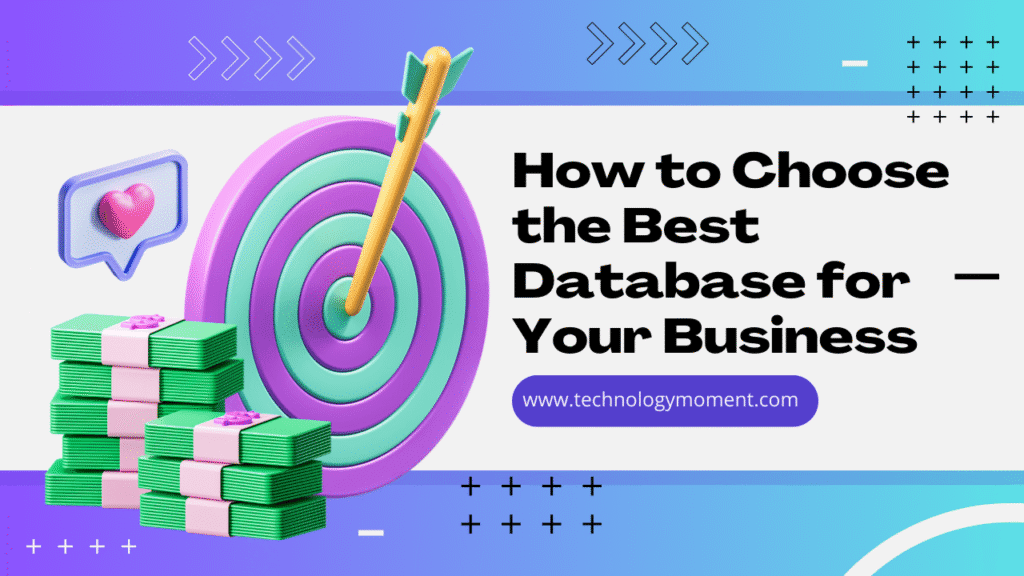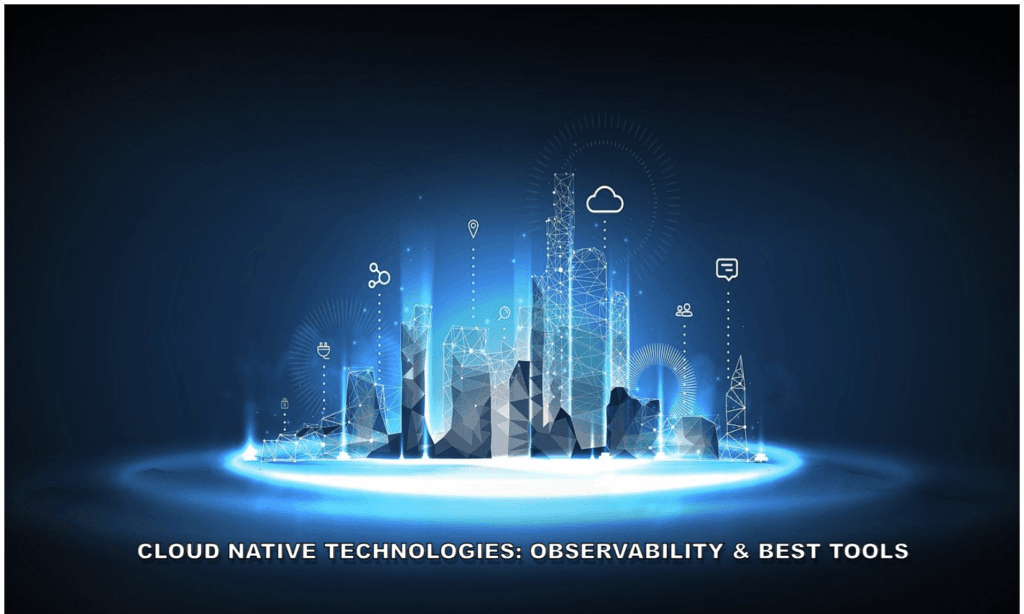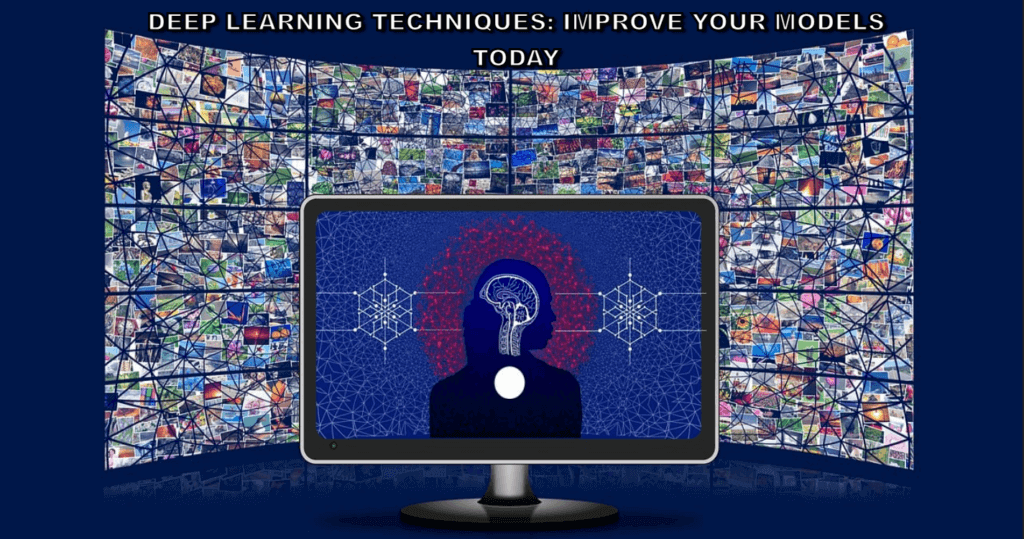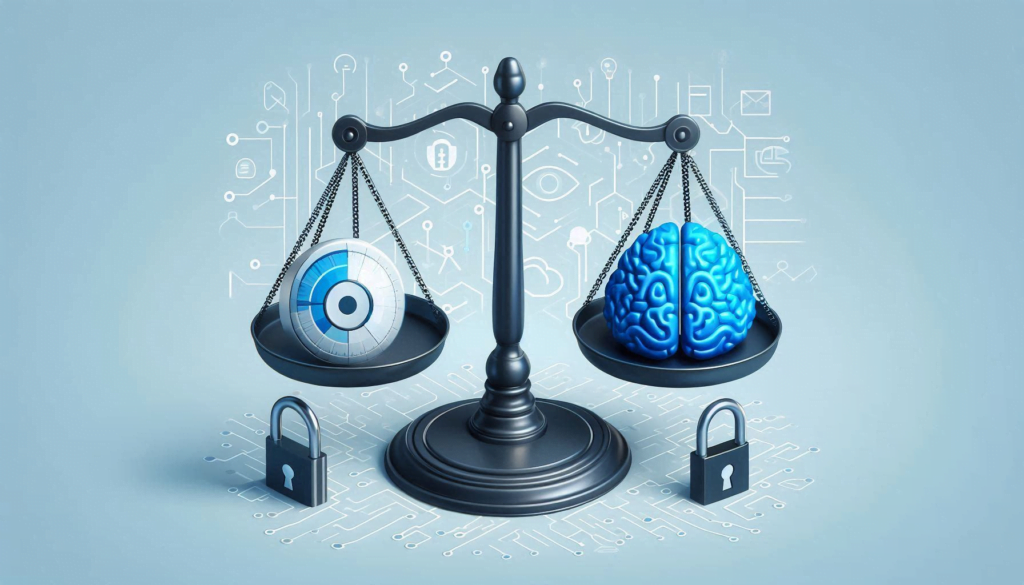Welcome to Technology Moment, your go-to hub for the latest and most insightful updates on how technology is reshaping the world. In this rapidly evolving digital landscape, we delve deep into the transformative impact of cutting-edge technologies across various sectors. Today, we’re focusing on a topic that’s revolutionizing the modern business environment: Artificial Intelligence (AI).
AI is more than just a buzzword; it’s a game-changer for businesses of all sizes. From enhancing customer experiences to streamlining operations and driving innovation, AI’s potential is vast and varied. Our latest blog post explores how AI is not only changing the way businesses function but also how it’s creating new opportunities and challenges. Join us as we uncover the profound ways AI is making waves in the business world, providing you with the knowledge to stay ahead in this technological era.
Artificial Intelligence (AI) has transitioned from a buzzword to a vital component of modern business operations. Understanding its potential and the ways it can be integrated into various business functions is essential for any organization looking to stay competitive in today’s fast-paced world.
These systems are designed to perform tasks that would typically require human cognition, such as learning, reasoning, problem-solving, and understanding language. AI encompasses a broad range of technologies, including machine learning, natural language processing, and computer vision, each contributing to different aspects of business operations.
Machine learning, a subset of AI, enables systems to learn from data and improve their performance over time without being explicitly programmed. This capability is particularly valuable in business, where vast amounts of data are generated daily, and AI can help make sense of this data, uncovering patterns and insights.
The Application of AI in Business
The integration of AI into business is not just a trend but a revolution. Companies across industries are leveraging AI to drive efficiency, innovation, and growth.
- Technological Advancements: The continuous evolution of AI technologies, such as deep learning algorithms and advanced neural networks, has made AI more accessible and powerful than ever before. These advancements have enabled businesses to deploy AI solutions tailored to their specific needs, from customer service chatbots to predictive analytics tools.
- Data Explosion: Businesses are now dealing with massive amounts of structured and unstructured data. AI’s ability to process and analyze this data at scale provides businesses with actionable insights that can inform decision-making, optimize processes, and enhance customer experiences.
- Competitive Pressure: As more businesses adopt AI, those that don’t risk falling behind. Companies are increasingly recognizing that AI can give them a competitive edge by improving operational efficiency, reducing costs, and enabling the development of innovative products and services.
- Cost Reduction: The costs associated with implementing AI technologies have decreased significantly over the years. Cloud computing, open-source AI frameworks, and affordable hardware have made it possible for even small and medium-sized businesses to adopt AI without the need for massive capital investments.
- Customer Expectations: Modern consumers expect personalized, efficient, and seamless experiences. AI enables businesses to meet these expectations by providing tailored recommendations, improving response times, and delivering superior customer service.
Table of Contents
The Impact of AI on Business Operations
AI is revolutionizing business operations across various sectors by introducing efficiency, accuracy, and speed that were previously unimaginable. Let’s dive into how AI is impacting business operations in detail:
Streamlining Processes with AI
AI technologies are designed to handle repetitive tasks that are time-consuming and prone to human error. By automating these tasks, businesses can streamline their operations significantly. For instance, AI-powered software can automate data entry, process transactions, manage inventory, and even handle customer inquiries without human intervention. This not only saves time but also reduces the chances of errors, leading to more reliable and consistent outcomes.
Automation through AI also enables businesses to operate around the clock, something that was impossible with human-only workflows. For example, e-commerce platforms use AI to manage orders and handle customer service queries 24/7, ensuring that customers have a seamless experience regardless of the time of day.
AI-Powered Decision Making
One of the most significant impacts of AI on business operations is its ability to enhance decision-making processes. AI systems can analyze vast amounts of data far quicker and more accurately than humans, providing businesses with insights that were previously unattainable. By processing data from various sources, AI can identify patterns, predict trends, and recommend actions, enabling businesses to make informed decisions.
For instance, in retail, AI can analyze customer behavior data to optimize inventory levels, ensuring that popular products are always in stock while reducing excess inventory. In finance, AI can assess market trends and help investors make better trading decisions. This data-driven approach not only improves decision-making but also reduces the risks associated with business operations.
Moreover, AI’s predictive analytics capabilities are transforming how businesses plan for the future. By analyzing historical data and current market conditions, AI can forecast future trends, allowing businesses to prepare and adapt proactively. This is particularly useful in industries like manufacturing and logistics, where anticipating demand can lead to significant cost savings and improved customer satisfaction.
Optimizing Resource Management
AI also plays a crucial role in optimizing the management of resources, both human and material. In human resources, AI can match employees with tasks that suit their skills and availability, ensuring that the workforce is utilized most effectively.
In terms of material resources, AI can optimize supply chains by predicting demand, managing inventory levels, and identifying the most efficient routes for delivery. This not only reduces waste but also ensures that products are delivered on time, improving overall operational efficiency.
Improving Operational Scalability
As businesses grow, managing operations becomes increasingly complex. AI provides the scalability needed to handle this growth without compromising efficiency. For instance, as a company’s customer base expands, AI can scale customer service operations by deploying more chatbots or virtual assistants to handle the increased volume of inquiries.
Similarly, in production environments, AI-driven automation allows businesses to scale up manufacturing processes without the need for proportional increases in human labor. This scalability ensures that businesses can grow rapidly while maintaining high operational standards.
AI in Customer Service
AI is revolutionizing customer service by providing businesses with tools that not only enhance customer experiences but also improve efficiency and reduce operational costs. The integration of AI into customer service involves the use of various technologies, such as chatbots, virtual assistants, and machine learning algorithms, to interact with customers, solve problems, and deliver personalized experiences.
Chatbots and Virtual Assistants
Unlike traditional customer service, which relies heavily on human agents, chatbots can operate 24/7, providing instant responses to customers at any time of day.
- Chatbots: These are AI-powered programs that simulate human conversation. They can be integrated into websites, social media platforms, and messaging apps to interact with customers in real time. Chatbots are particularly effective in handling repetitive tasks such as answering FAQs, processing orders, and providing product information. By doing so, they free up human agents to focus on more complex issues that require a personal touch.
- Virtual Assistants: Going a step further, virtual assistants like Amazon’s Alexa or Apple’s Siri can perform more sophisticated tasks. In a customer service context, virtual assistants can manage schedules, set reminders, or even make reservations on behalf of customers. Their ability to understand and process natural language allows them to engage with customers in a more human-like manner, making interactions feel more personal and tailored.
Enhancing Customer Experience with AI
AI in customer service isn’t just about efficiency; it’s also about improving the quality of customer interactions. By leveraging AI, businesses can offer more personalized and responsive service, which is critical in today’s competitive market.
- Personalization: For example, if a customer frequently purchases a particular type of product, the AI system can suggest similar items or offer discounts tailored to their preferences. This level of personalization not only makes the customer feel valued but also drives sales by targeting specific needs and desires.
- Proactive Support: AI can predict potential issues before they become problems, allowing businesses to offer proactive support. For instance, if an AI system detects a pattern that suggests a customer might face a technical issue with a product, it can send troubleshooting tips or alert the customer service team to reach out before the customer even realizes there’s a problem. This proactive approach can significantly enhance customer satisfaction by addressing concerns before they escalate.
- Real-Time Assistance: With AI, customers no longer have to wait on hold or for an email response. AI-driven systems can provide immediate assistance, whether it’s through a chatbot or an automated email response. This immediacy not only improves customer satisfaction but also reduces the workload on human agents, allowing them to handle more complex inquiries.
The Future of AI in Customer Service
The future of AI in customer service looks promising, with ongoing advancements making AI tools even more sophisticated. We can expect to see AI systems that are better at understanding context, emotion, and intent, making interactions even more seamless and human-like. Moreover, as AI continues to learn from interactions, it will become more adept at anticipating customer needs and providing even more personalized and efficient service.
AI in Marketing
AI is revolutionizing the marketing landscape by enabling businesses to connect with their customers in more personalized, efficient, and impactful ways. Here’s how AI is making a significant difference in the world of marketing:
Personalization and Targeted Marketing
In the past, marketers would segment their audiences based on broad categories like age, gender, or location. However, with AI, personalization goes much deeper. AI algorithms analyze vast amounts of data, including browsing history, purchase patterns, social media behavior, and even real-time interactions, to create highly personalized marketing messages. This means that each customer can receive content, product recommendations, and advertisements that are tailored specifically to their preferences and needs.
For example, e-commerce platforms like Amazon use AI to suggest products to customers based on their past purchases and browsing history. This level of personalization increases the chances of conversion, as customers are more likely to engage with content that feels relevant to them.
Predictive Analytics in Marketing Campaigns
AI-powered predictive analytics is another game-changer in marketing. For instance, AI can predict which products are likely to be in high demand during a specific season or event, enabling companies to stock up accordingly and tailor their marketing campaigns to capitalize on these trends.
Additionally, AI can help identify which marketing strategies are likely to be most effective for a particular audience. For example, by analyzing data from past campaigns, AI can determine the best times to send emails, the most effective types of content to share on social media, and the optimal pricing strategies for different customer segments.
Automating Marketing Processes
Tasks such as content creation, social media management, and email marketing can now be automated with the help of AI. For instance, AI-powered tools can generate blog posts, social media updates, and even video content with minimal human intervention.
In email marketing, AI can automate the process of sending personalized emails to different segments of the customer base. It can also optimize email delivery times and subject lines to improve open rates and engagement.
Enhanced Customer Insights
By analyzing data from various sources, including social media, web analytics, and customer feedback, AI can uncover patterns and trends that might not be immediately obvious. These insights enable marketers to make data-driven decisions, refine their strategies, and create more effective marketing campaigns.
For example, AI can analyze sentiment from social media posts and reviews to gauge public perception of a brand. This information can then be used to adjust messaging, address customer concerns, and improve overall brand image.
Chatbots and Virtual Assistants in Marketing
AI-powered chatbots and virtual assistants are increasingly being used in marketing to engage with customers in real-time. These tools can handle customer inquiries, provide product recommendations, and even guide users through the purchasing process.
For instance, a chatbot on a retail website can help customers find products, answer questions about availability, and even process orders.
Optimizing Advertising Spend
AI helps businesses optimize their advertising spend by analyzing performance data in real-time. AI can determine which ads are performing well, which ones need adjustment, and where marketing dollars should be allocated for maximum return on investment (ROI). This is especially useful in digital advertising, where campaigns can be adjusted on the fly based on real-time data.
For example, AI can automatically adjust bids for pay-per-click (PPC) advertising based on the likelihood of conversion, ensuring that businesses get the most value from their ad spend.
AI in Human Resources
AI is revolutionizing Human Resources (HR) by transforming how businesses manage talent, engage employees, and streamline HR processes. The integration of AI in HR brings about a more efficient, data-driven approach to managing the workforce, making it a crucial asset for modern organizations.
Recruitment and Talent Acquisition
One of the most significant impacts of AI in HR is in recruitment and talent acquisition. Traditionally, the recruitment process involved sifting through hundreds of resumes, conducting numerous interviews, and manually assessing candidates’ qualifications. AI changes this by automating much of the process, allowing HR professionals to focus on higher-level decision-making.
- Resume Screening: AI-powered tools can quickly scan and analyze resumes to identify the most qualified candidates based on specific criteria set by the employer.
- Candidate Sourcing: AI can also assist in sourcing candidates by analyzing vast amounts of data from job boards, social media, and professional networks like LinkedIn. By identifying patterns and predicting where the best candidates are likely to be found, AI helps companies proactively reach out to potential hires.
- Interview Process: AI-driven platforms can conduct preliminary interviews using chatbots or video interview software. These systems assess candidates’ responses, tone, and even facial expressions to gauge their suitability for a role. This not only saves time but also standardizes the interview process, reducing potential biases.
AI for Employee Engagement and Retention
Beyond recruitment, AI plays a vital role in enhancing employee engagement and retention—key factors in maintaining a productive workforce. By leveraging AI, HR departments can gain insights into employee satisfaction, predict turnover, and create personalized development plans.
- Sentiment Analysis: AI tools can analyze employee feedback from surveys, emails, and internal communications to gauge overall sentiment within the organization. By identifying trends in employee morale, HR can proactively address issues before they lead to dissatisfaction or turnover.
- Personalized Learning and Development: AI helps in creating customized learning paths for employees based on their career goals, skill gaps, and performance data. For instance, AI can recommend specific training programs or courses that align with an employee’s career aspirations, thus fostering growth and retention.
- Predictive Analytics for Retention: AI can predict which employees are at risk of leaving by analyzing various factors such as job satisfaction, engagement levels, and career progression. With this information, HR can take preemptive actions, such as offering new opportunities or additional support, to retain valuable employees.
- Performance Management: AI-powered tools enable continuous performance management by providing real-time feedback and tracking progress against set goals. These tools can identify areas where an employee may need support or development, allowing HR to intervene early and help employees succeed.
The Benefits of AI in HR
- Efficiency: By automating repetitive tasks, AI frees up HR professionals to focus on more strategic activities, such as talent development and organizational planning.
- Data-Driven Decision Making: AI provides HR with actionable insights based on data, leading to more informed decisions regarding recruitment, employee engagement, and retention.
- Improved Candidate Experience: With AI streamlining the recruitment process, candidates experience quicker response times and a more personalized interaction with the company.
- Enhanced Employee Satisfaction: AI’s ability to provide personalized development plans and predict potential issues contributes to higher employee satisfaction and lower turnover rates.
Challenges of AI in HR
While AI offers numerous benefits, its implementation in HR also comes with challenges:
- Bias in AI Algorithms: If not properly managed, AI algorithms can perpetuate existing biases in recruitment and talent management. Ensuring fairness and transparency in AI systems is crucial to avoid discriminatory practices.
- Privacy Concerns: The use of AI in analyzing employee data raises concerns about privacy. Companies must be transparent about how they use AI and ensure that employee data is handled with care.
- Human Element: While AI can handle many tasks, the human element of HR—such as empathy, understanding, and personal connection—remains irreplaceable. Balancing AI’s capabilities with the need for human interaction is key to successful HR management.
AI in Finance
Artificial Intelligence is rapidly transforming the finance industry, bringing a new level of efficiency, accuracy, and security to various financial operations. The integration of AI into finance is not just a trend but a significant shift in how financial institutions manage their processes, interact with customers, and safeguard assets. Here’s a detailed look at how AI is making its mark in the finance sector:

Automating Financial Processes
One of the most impactful applications of AI in finance is the automation of routine and repetitive tasks. Traditionally, financial operations like data entry, reconciliation, and report generation required substantial manual effort, which was not only time-consuming but also prone to errors. With AI, these processes can now be automated, leading to faster, more accurate results.
For instance, AI-powered tools can automatically categorize transactions, generate financial statements, and even handle tax calculations with minimal human intervention. This automation frees up valuable time for financial professionals, allowing them to focus on more strategic activities, such as financial planning and analysis.
AI in Risk Management and Fraud Detection
Risk management is a critical aspect of finance, and AI is enhancing the ability of institutions to identify and mitigate risks. AI algorithms can analyze vast amounts of data in real-time, spotting patterns and anomalies that might indicate potential risks. For example, AI can monitor market conditions and assess the creditworthiness of borrowers more accurately than traditional methods.
Financial fraud, such as credit card fraud, identity theft, and money laundering, has become increasingly sophisticated. AI-powered systems use machine learning algorithms to detect unusual activities that deviate from normal patterns, flagging them for further investigation. These systems are capable of analyzing transaction data, user behavior, and even social media activity to detect fraudulent activities quickly and accurately.
For example, if a credit card is suddenly used in a different country for a large purchase, AI can instantly compare this transaction against the cardholder’s usual spending patterns and flag it as suspicious. This real-time detection allows financial institutions to act swiftly, preventing potential losses.
AI in Financial Forecasting and Decision-Making
AI is also revolutionizing financial forecasting and decision-making. Predictive analytics, driven by AI, allows financial institutions to forecast market trends, customer behavior, and economic conditions with greater accuracy. By analyzing historical data and current market conditions, AI can provide insights that help in making informed decisions.
For example, AI can predict stock price movements, assess the impact of economic events on investment portfolios, and even recommend optimal trading strategies. This ability to foresee market trends gives businesses a competitive edge, enabling them to capitalize on opportunities and mitigate risks before they become significant issues.
Personalized Financial Services with AI
Personalization is becoming increasingly important in the finance sector, and AI is at the forefront of this trend. AI-powered systems can analyze customer data to offer personalized financial advice, product recommendations, and services. For instance, robo-advisors use AI to create and manage personalized investment portfolios based on an individual’s financial goals, risk tolerance, and preferences.
These AI-driven platforms can also provide tailored recommendations for banking products, such as loans, credit cards, or savings accounts, based on a customer’s spending habits and financial needs.
Enhancing Compliance and Regulatory Adherence
The finance industry is heavily regulated, and ensuring compliance with various laws and regulations is a major challenge. AI can simplify this process by automating compliance checks and monitoring regulatory changes. AI systems can scan through large volumes of documents and transactions to ensure that they comply with regulations, reducing the risk of non-compliance.
Moreover, AI can keep financial institutions updated on the latest regulatory changes, ensuring that they are always in line with the current legal requirements. This not only reduces the risk of fines and penalties but also builds trust with customers and regulators.
AI in Supply Chain Management
AI is revolutionizing supply chain management by making it more efficient, responsive, and predictive. As businesses face increasing demands for faster deliveries, higher customer expectations, and global competition, AI offers solutions that help streamline operations and reduce costs.
Optimizing Logistics and Inventory with AI
One of the most significant impacts of AI in supply chain management is its ability to optimize logistics and inventory. Traditional methods of managing supply chains often involve manual processes, which can be time-consuming and prone to errors. AI, on the other hand, uses algorithms and machine learning to analyze large amounts of data, enabling businesses to make more accurate predictions about demand, inventory levels, and shipping schedules.
For example, AI-powered tools can analyze historical sales data, market trends, and even weather patterns to forecast demand more accurately. Additionally, AI can optimize delivery routes by considering factors such as traffic patterns, fuel costs, and delivery windows, leading to faster and more cost-effective transportation.
Predictive Maintenance and AI
AI also plays a crucial role in predictive maintenance within the supply chain. Equipment failure or downtime can cause significant disruptions, leading to delays and increased costs. Traditional maintenance schedules are often based on fixed intervals, which may not always align with the actual condition of the equipment.
With AI, businesses can monitor equipment in real-time using sensors and IoT devices. AI algorithms analyze data such as vibration, temperature, and usage patterns to predict when a machine is likely to fail. This allows for maintenance to be scheduled at the most opportune time, reducing downtime and extending the lifespan of the equipment.
For instance, in a warehouse setting, AI can predict when conveyor belts, forklifts, or sorting machines require maintenance, ensuring that the supply chain continues to run smoothly without unexpected interruptions. This not only improves operational efficiency but also contributes to cost savings by preventing costly emergency repairs and minimizing downtime.
Enhanced Decision-Making with AI
AI in supply chain management also enhances decision-making by providing real-time insights and recommendations. AI systems can process vast amounts of data from various sources, such as supplier performance, customer feedback, and market conditions, to provide actionable insights. This helps supply chain managers make informed decisions quickly, such as choosing the best suppliers, adjusting production schedules, or reallocating resources.
For example, if a supplier is experiencing delays, AI can suggest alternative suppliers based on factors like lead time, cost, and quality. This proactive approach helps businesses maintain continuity and avoid disruptions in the supply chain.
Improving Customer Satisfaction
By optimizing every aspect of the supply chain, from inventory management to delivery, AI directly impacts customer satisfaction. Faster, more reliable deliveries, accurate inventory levels, and the ability to respond quickly to changes in demand all contribute to a better customer experience. AI-driven supply chains are more agile, allowing businesses to meet customer expectations more effectively.
AI and Data Analytics
Leveraging Big Data with AI
In today’s digital age, businesses generate massive amounts of data from various sources, including customer interactions, sales transactions, social media activity, and operational processes. This vast pool of information, often referred to as “Big Data,” holds valuable insights that can drive strategic decision-making and enhance business performance. However, manually analyzing such large datasets can be overwhelming and time-consuming. This is where AI steps in.
AI technologies, particularly machine learning algorithms, are adept at processing and analyzing Big Data at scale. These algorithms can identify patterns, correlations, and trends that might be impossible for humans to detect. For instance, AI can analyze customer purchase histories and social media behaviors to predict future buying trends, allowing businesses to tailor their marketing strategies accordingly.
Moreover, AI’s ability to process unstructured data, such as text, images, and videos, further amplifies its utility in data analytics. Natural Language Processing (NLP) enables AI to analyze customer feedback, reviews, and social media posts to gauge public sentiment about a brand or product. This sentiment analysis can help businesses understand customer satisfaction and adjust their strategies to improve customer experience.
Real-Time Analytics for Business Insights
Traditional data analysis methods often involve delays as data must be collected, cleaned, and analyzed before any insights can be derived. AI, on the other hand, can analyze data as it is generated, providing businesses with real-time insights that are crucial for making timely decisions.
For example, in the retail industry, AI can monitor inventory levels in real time, alerting managers when stock is low and even predicting future inventory needs based on current trends. This ensures that products are always available when customers need them, reducing the risk of stockouts and lost sales.
In the financial sector, AI-driven real-time analytics can detect fraudulent transactions as they occur, allowing businesses to take immediate action to prevent financial losses. Similarly, AI can analyze market data in real time, providing traders with up-to-the-minute insights that can inform their trading strategies.
Real-time analytics powered by AI also enables businesses to respond swiftly to changes in customer behavior. For instance, if a sudden spike in demand for a particular product is detected, AI can trigger automated actions such as adjusting pricing, increasing marketing efforts, or reordering stock to capitalize on the opportunity.
Enhancing Predictive Analytics with AI
Predictive analytics is another area where AI excels. This capability is invaluable for businesses looking to forecast sales, manage risks, and plan for the future.
AI enhances predictive analytics by improving the accuracy and reliability of predictions. This iterative process allows businesses to stay ahead of market trends, anticipate customer needs, and make proactive decisions.
For example, in the healthcare industry, AI-driven predictive analytics can forecast patient admissions, enabling hospitals to allocate resources more effectively. In the manufacturing sector, AI can predict equipment failures, allowing for preventive maintenance that reduces downtime and extends the lifespan of machinery.
Furthermore, AI can combine predictive analytics with prescriptive analytics, which not only predicts future outcomes but also suggests actions to achieve desired results. This combination empowers businesses to not only anticipate the future but also take strategic steps to shape it.
Improving Decision-Making with AI-Powered Data Analytics
AI-driven data analytics is transforming decision-making processes across industries. By providing deep insights and accurate predictions, AI enables businesses to make informed decisions that are data-driven rather than based on intuition or guesswork.
For instance, AI can help businesses optimize their supply chains by analyzing data on supplier performance, logistics, and market demand. This allows companies to make decisions that reduce costs, improve efficiency, and enhance customer satisfaction.
AI can also support strategic decision-making by providing scenario analysis and simulations. Businesses can model different scenarios and evaluate the potential outcomes before making critical decisions, reducing risks and improving the likelihood of success.
Moreover, AI-powered analytics can democratize decision-making by making data insights accessible to employees at all levels. With user-friendly AI tools, employees without data science expertise can explore data, generate reports, and make data-informed decisions that align with business objectives.
AI in Product Development
AI-Driven Innovation and R&D
Artificial Intelligence (AI) is revolutionizing product development by enabling companies to innovate more rapidly and efficiently. Traditionally, product development involved extensive research and development (R&D) phases, requiring significant time and resources to bring new products to market. AI, however, is transforming this process in several ways:
- Accelerated Discovery: AI algorithms can analyze vast amounts of data to identify trends and patterns that might not be evident to human researchers. This capability helps companies pinpoint new product opportunities and market needs more quickly. For example, AI can sift through customer feedback, market reports, and industry news to highlight emerging trends or gaps in the market that could be addressed with new products.
- Enhanced Creativity: AI tools can assist in generating innovative ideas for new products by leveraging machine learning and natural language processing. For instance, generative design algorithms can explore countless design variations and suggest creative solutions that might not be immediately obvious to human designers. This can lead to novel and more efficient product designs, often resulting in breakthroughs that drive competitive advantage.
- Optimized Prototyping: AI-driven simulation tools allow for rapid prototyping and testing. Machine learning models can simulate various scenarios and predict the performance of prototypes under different conditions. This reduces the need for physical prototypes and accelerates the testing phase, allowing for faster iterations and refinements. By using AI to predict how a product will behave, companies can avoid costly and time-consuming physical testing.
- Personalized Products: AI enables the creation of personalized products tailored to individual customer preferences. By analyzing user data and behavior, AI can help design products that meet specific needs and preferences, enhancing customer satisfaction. For example, AI can be used to create custom recommendations for clothing or personalized features in consumer electronics based on users’ past behavior and preferences.
Reducing Time-to-Market with AI
AI also plays a crucial role in shortening the time-to-market for new products.
- Automated Workflow: AI tools can automate repetitive and time-consuming tasks involved in product development, such as data entry, analysis, and report generation. This automation speeds up various stages of the development process, allowing teams to focus on more strategic tasks and making the overall workflow more efficient.
- Predictive Analytics: AI-powered predictive analytics can forecast market trends and demand for new products. By analyzing historical data and market signals, AI can provide insights into which products are likely to succeed or face challenges. This foresight helps businesses make informed decisions about product development, reducing the risk of launching products that may not perform well in the market.
- Efficient Resource Allocation: AI can optimize resource allocation by identifying the most critical areas that need attention during product development. This ensures that resources are used effectively and that potential bottlenecks are addressed proactively. For example, AI can analyze project timelines and resource utilization to recommend adjustments that streamline the development process and reduce delays.
- Improved Collaboration: AI facilitates better collaboration among product development teams by providing advanced tools for communication and project management. AI-driven platforms can track progress, manage tasks, and ensure that all team members are aligned with project goals. This enhances coordination and minimizes misunderstandings, leading to a more efficient development process.
The Role of AI in Enhancing Security
Businesses and organizations face ever-growing threats from cyber attacks, data breaches, and physical security risks. AI (Artificial Intelligence) is playing a crucial role in bolstering security measures, offering advanced solutions that enhance both cybersecurity and physical security.

AI in Cybersecurity
1. Threat Detection and Response: AI enhances cybersecurity by providing sophisticated threat detection and response capabilities. However, AI-powered systems use machine learning algorithms to analyze vast amounts of data and detect anomalies that may indicate a security breach. These systems can identify potential threats in real-time, even those that deviate from known patterns, enabling faster and more accurate responses.
2. Behavioral Analysis: AI systems can monitor user behavior and establish a baseline for normal activities. By continuously analyzing user actions, these systems can identify unusual behavior that may signal a potential security threat, such as unauthorized access or data exfiltration attempts. Behavioral analysis helps in detecting insider threats and reducing false positives, improving the overall efficiency of security operations.
3. Automated Incident Response: AI-driven security systems can automate incident response processes, reducing the need for human intervention. For example, if an AI system detects a potential threat, it can automatically isolate affected systems, block malicious IP addresses, and initiate predefined response protocols. This automation not only speeds up the response time but also ensures consistency in handling security incidents.
4. Advanced Threat Intelligence: AI can analyze and correlate data from various sources to provide comprehensive threat intelligence. By aggregating information from internal and external sources, AI systems can identify emerging threats, understand attack vectors, and predict potential security risks. This proactive approach allows businesses to stay ahead of threats and implement preventive measures effectively.
AI for Physical Security in Businesses
1. Surveillance and Monitoring: AI enhances physical security through advanced surveillance systems. AI-powered cameras and sensors can analyze video feeds in real-time to detect unusual activities or breaches. For example, AI systems can identify unauthorized individuals entering restricted areas, monitor crowd movements, and even recognize suspicious behavior. This capability improves the accuracy of threat detection and reduces the reliance on human surveillance operators.
2. Facial Recognition: Facial recognition technology, powered by AI, is increasingly used for access control and monitoring purposes. By comparing facial features against a database of known individuals, AI systems can grant or deny access to secured areas. This technology not only enhances security but also streamlines access control processes, making them more efficient and less prone to errors.
3. Smart Alarms and Alerts: AI can integrate with alarm systems to provide smart alerts based on real-time data analysis. For instance, AI can analyze data from motion sensors, door sensors, and other security devices to determine if an alarm should be triggered. By reducing false alarms and prioritizing genuine threats, AI improves the effectiveness of physical security systems.
4. Predictive Analytics: AI can use predictive analytics to anticipate potential security issues before they occur. By analyzing historical data and identifying patterns, AI systems can predict where security breaches or incidents might happen. This foresight allows businesses to implement preventive measures and allocate resources more effectively to mitigate potential risks.
Ethical Considerations of AI in Business
As AI becomes more embedded in business operations, addressing ethical considerations is crucial to ensure that its use aligns with societal values and legal standards.
Addressing Bias and Fairness
Bias in AI Systems: One of the most significant ethical challenges in AI is the risk of bias. AI systems are often trained on historical data, which may reflect existing prejudices and inequalities. For instance, if an AI recruitment tool is trained on data from past hiring practices that favor certain demographics, it may inadvertently perpetuate these biases, leading to discriminatory outcomes.
Ensuring Fairness: To mitigate bias, businesses must implement practices such as diverse data sourcing and regular audits of AI algorithms. It’s important to involve cross-disciplinary teams in the development of AI systems, including ethicists and sociologists, to ensure that the technology is fair and inclusive. Transparent algorithms and the ability to explain AI decisions can also help in making the process more equitable.
Ensuring Transparency and Accountability
Algorithmic Transparency: Transparency in AI involves making the workings of AI systems understandable to users and stakeholders. This includes disclosing how data is used, how algorithms make decisions, and what factors influence those decisions. Without transparency, it becomes difficult to trust AI systems and hold them accountable for their actions.
Accountability Mechanisms: Businesses must establish clear lines of accountability for AI-driven decisions. This means identifying who is responsible when AI systems fail or produce harmful outcomes. Regular audits, ethical reviews, and clear documentation of AI decision-making processes can help in ensuring that the technology is used responsibly and that businesses can be held accountable for its impact.
Privacy Concerns
Data Privacy: However, this raises concerns about data privacy and the protection of sensitive information. Businesses must ensure that AI systems comply with data protection regulations such as GDPR and CCPA. This involves implementing robust data security measures and obtaining informed consent from individuals whose data is being used.
Balancing Personalization and Privacy: While AI can enhance user experiences through personalization, it’s important to strike a balance between customization and privacy. Businesses should provide users with control over their data and transparent information about how it’s used.
Impact on Employment
Job Displacement: AI can lead to significant changes in the job market, including the displacement of workers in certain roles. Ethical considerations involve addressing the impact of AI on employment and implementing strategies to support affected workers. This could include reskilling programs, job transition assistance, and exploring new roles that AI creates.
Fair Labor Practices: As AI systems take on more tasks, businesses must ensure that labor practices remain fair and just. This includes safeguarding workers’ rights, ensuring equitable pay, and avoiding exploitation in the deployment of AI technologies.
Ethical Use of AI in Decision-Making
Avoiding Manipulation: AI systems can be used to influence and manipulate behavior, such as through targeted advertising or recommendation algorithms. Ethical considerations involve ensuring that AI is used in ways that respect individual autonomy and avoid manipulative practices.
Responsible AI Deployment: Businesses should have clear guidelines for the responsible deployment of AI technologies. This includes assessing the potential risks and benefits of AI systems and ensuring that they are used in ways that align with ethical standards and contribute positively to society.
Challenges in Implementing AI in Business
Implementing AI in business is a transformative move, but it comes with its own set of challenges. Addressing these challenges effectively is crucial for ensuring a successful AI adoption. Here are some of the primary obstacles businesses may encounter:
1. Overcoming Resistance to Change
Resistance to change is one of the most significant barriers to AI implementation. Employees and management may be wary of new technologies due to:
- Fear of Job Loss: There’s a common concern that AI might replace human jobs, leading to resistance from staff who fear for their employment security.
- Unfamiliarity with Technology: Some employees may not be familiar with AI tools and may feel overwhelmed or skeptical about their efficacy.
- Cultural Resistance: Organizational culture plays a crucial role. Companies with a traditional mindset might find it harder to adopt AI as they might be set in their ways.
Solution: To combat resistance, it’s essential to provide education and training about AI. Demonstrating AI’s potential benefits and offering support during the transition can help ease concerns. Engaging employees early in the process and involving them in the AI integration strategy can also reduce resistance.
2. Addressing Technical and Data Challenges
Technical complexities and data issues can pose significant challenges:
- Integration with Existing Systems: AI solutions often need to integrate with legacy systems, which can be complex and costly. Ensuring compatibility and seamless integration requires significant technical expertise.
- Data Quality and Quantity: AI algorithms depend on high-quality, relevant data. Businesses might struggle with insufficient, inaccurate, or poorly organized data. The success of AI models is directly tied to the data they are trained on.
- Scalability Issues: AI systems need to be scalable to handle growing amounts of data and increasing complexity. Scaling AI solutions can be technically challenging and expensive.
Solution: Investing in robust IT infrastructure and data management practices is crucial. Conducting a thorough assessment of current systems and ensuring proper data governance can mitigate technical and data-related issues. Collaborating with experienced AI vendors and consultants can also help in addressing these challenges.
3. Managing Costs and ROI
Implementing AI can be expensive, and businesses may struggle to see a quick return on investment (ROI). Challenges include:
- High Initial Costs: The cost of developing, purchasing, and integrating AI systems can be significant. For small to medium-sized enterprises (SMEs), these upfront costs can be a major hurdle.
- Long-Term ROI Uncertainty: Measuring the ROI of AI projects can be complex. Businesses may face difficulties in quantifying the benefits and evaluating the long-term value of their AI investments.
Solution: To manage costs and ensure a favorable ROI, businesses should start with pilot projects to validate AI solutions before full-scale implementation. Clearly defining objectives, measuring performance against specific metrics, and focusing on high-impact areas can help in achieving a better ROI.
4. Ensuring Ethical and Responsible Use
Ethical considerations are becoming increasingly important in AI deployment. Challenges include:
- Bias in AI Algorithms: AI systems can unintentionally perpetuate biases present in training data, leading to unfair or discriminatory outcomes.
- Privacy Concerns: AI applications often involve processing large amounts of personal data, raising concerns about data privacy and security.
Solution: Businesses should prioritize transparency and fairness in their AI systems. Implementing robust data governance policies, conducting regular audits for biases, and ensuring compliance with data protection regulations are critical steps. Engaging with ethical AI frameworks and guidelines can also help address these concerns.
5. Maintaining and Updating AI Systems
AI systems are not a one-time setup; they require ongoing maintenance and updates:
- Continuous Monitoring: AI systems need constant monitoring to ensure they operate correctly and adapt to changing conditions.
- Updating Models: AI models may need frequent updates to maintain accuracy as new data becomes available or as business needs evolve.
Solution: Establishing a dedicated team for AI maintenance and updates is crucial. Regularly reviewing and refining AI models based on performance and feedback ensures that the systems remain effective and relevant.
The Future of AI in Business
Artificial Intelligence (AI) is set to revolutionize the business landscape even further as technology advances and becomes more integrated into daily operations.
1. Emerging AI Technologies
AI technology is evolving rapidly, bringing new capabilities and applications to the forefront. Some of the emerging technologies that are likely to shape the future of AI in business include:
- Generative AI: This technology focuses on creating new content, such as text, images, and videos, by learning from existing data. Businesses can use generative AI for content creation, marketing, and even product design.
- Explainable AI (XAI): Explainable AI aims to make AI decisions more transparent and interpretable, which is essential for trust and compliance, especially in regulated industries.
- AI and Quantum Computing: Quantum computing promises to vastly increase processing power, which could lead to breakthroughs in AI capabilities. This could enable businesses to solve complex problems that are currently beyond the reach of classical computers.
- Edge AI: AI processing at the edge of the network (e.g., on IoT devices) can reduce latency and improve real-time decision-making. This is particularly useful in applications requiring immediate responses, such as autonomous vehicles and smart factories.
2. The Long-Term Impact of AI on the Workplace
AI’s integration into the workplace is expected to bring about several long-term changes:
- Automation of Complex Tasks: While AI has already automated repetitive tasks, future advancements will enable it to handle more complex and creative tasks. This could lead to significant changes in job roles and responsibilities, with AI taking on more strategic functions.
- Enhanced Decision-Making: AI’s ability to analyze vast amounts of data quickly will lead to more informed and accurate decision-making. Businesses will rely on AI for strategic insights, predictive analytics, and scenario planning.
- Personalized Employee Experiences: AI will increasingly be used to personalize the work experience for employees. This could include tailored training programs, customized career development paths, and individualized feedback, leading to increased job satisfaction and productivity.
- Increased Collaboration Between Humans and AI: The future workplace will likely see more collaboration between AI systems and human workers, with AI handling data-driven tasks and humans focusing on creative and interpersonal aspects of work.
- Ethical and Regulatory Developments: As AI becomes more embedded in business practices, ethical and regulatory considerations will play a significant role. New regulations and ethical standards will likely emerge to address these challenges.
3. The Role of AI in Driving Innovation
AI will continue to be a driving force behind innovation in various industries. Key areas where AI is expected to foster innovation include:
- Product Development: AI will enable faster and more efficient product development by predicting market trends, optimizing designs, and simulating product performance.
- Customer Experience: AI-driven solutions will enhance customer interactions through personalized recommendations, predictive customer service, and proactive engagement strategies.
- Supply Chain Optimization: AI will refine supply chain processes by predicting demand, optimizing inventory levels, and improving logistics efficiency.
- New Business Models: AI will lead to the creation of new business models and services, such as AI-as-a-Service (AIaaS), where companies can access advanced AI capabilities without having to develop them in-house.
Case Studies of AI in Business
Successful AI Implementations in Various Industries
- Retail: Walmart’s Use of AI for Inventory Management Walmart, a giant in the retail industry, has harnessed AI to revolutionize its inventory management system. By implementing AI algorithms, Walmart can predict inventory needs more accurately, reducing both overstock and stockouts. AI systems analyze historical sales data, seasonal trends, and external factors such as weather patterns to forecast demand with remarkable precision. This not only optimizes inventory levels but also enhances customer satisfaction by ensuring popular items are always in stock.
- Finance: JPMorgan Chase’s AI-Driven Fraud Detection JPMorgan Chase has adopted AI to bolster its fraud detection capabilities. Using machine learning algorithms, the bank can analyze vast amounts of transaction data in real-time to identify potentially fraudulent activities. AI models are trained to recognize patterns indicative of fraud, such as unusual spending behaviors or transactions from unfamiliar locations. This proactive approach allows JPMorgan Chase to mitigate risks and protect its customers from financial fraud.
- Healthcare: IBM Watson’s Role in Cancer Treatment IBM Watson for Oncology is a prime example of AI’s transformative impact in healthcare. Watson analyzes vast amounts of medical literature, clinical trial data, and patient records to assist oncologists in diagnosing and treating cancer. By providing evidence-based recommendations and identifying potential treatment options, Watson supports doctors in making more informed decisions, ultimately improving patient outcomes.
- Manufacturing: General Electric’s Predictive Maintenance General Electric (GE) uses AI for predictive maintenance across its manufacturing operations. By equipping machinery with sensors that collect data on performance and wear, AI algorithms can predict when a machine is likely to fail. This predictive approach enables GE to perform maintenance before actual breakdowns occur, reducing downtime and increasing operational efficiency. It also helps in scheduling repairs at optimal times, minimizing disruptions to production processes.
- Transportation: Uber’s Dynamic Pricing Model Uber leverages AI to implement dynamic pricing, also known as surge pricing, based on real-time demand and supply conditions. AI algorithms analyze factors such as the number of ride requests, driver availability, and traffic conditions to adjust fares dynamically. This ensures that Uber can balance supply and demand effectively, providing incentives for drivers to work during peak times and helping to manage the availability of rides for customers.
Lessons Learned from AI Adoption
- Importance of Data Quality One of the critical lessons learned from these case studies is the importance of high-quality data. For accurate and effective results, businesses must ensure their data is comprehensive, clean, and relevant. Poor data quality can lead to incorrect predictions and decisions, undermining the benefits of AI.
- Integration with Existing Systems Successful AI implementation often involves integrating AI solutions with existing business processes and systems. Companies need to ensure that AI tools complement their current workflows rather than disrupt them. This requires thoughtful planning and collaboration between IT teams and business units.
- Continuous Monitoring and Improvement Continuous monitoring and updating of AI systems are essential to maintain their effectiveness. As business environments and data evolve, AI models must be retrained and adjusted to adapt to new conditions and requirements.
- Employee Training and Change Management Introducing AI can significantly impact job roles and responsibilities. Businesses must invest in training programs to help employees understand and work with new AI tools. Effective change management practices are crucial to ensure a smooth transition and to address any concerns or resistance from staff.
- Ethical Considerations and Transparency The ethical use of AI is another important lesson. Businesses must be transparent about how AI systems make decisions, especially when it affects customers or employees. Ensuring that AI applications are fair, unbiased, and transparent helps build trust and mitigates potential ethical issues.
Conclusion
In the rapidly evolving landscape of modern business, Artificial Intelligence (AI) stands out as a transformative force with the potential to redefine traditional operations, strategies, and growth trajectories. As we draw to a close, let’s summarize the key points and reflect on the broader implications of AI in the business world.

Summarizing the Benefits and Challenges of AI in Business
AI’s integration into business practices offers a multitude of benefits. It streamlines operations by automating repetitive tasks, enhancing efficiency, and reducing human error. For example, AI-driven analytics provide deep insights into consumer behavior and market trends, enabling businesses to make more informed decisions. AI-powered tools in customer service, such as chatbots, offer around-the-clock support and improve customer satisfaction by providing timely responses.
However, the adoption of AI also brings challenges. One significant hurdle is the resistance to change, which can stem from concerns about job displacement or the perceived complexity of AI technologies. Additionally, technical and data-related issues, such as the need for high-quality data and the integration of AI systems with existing infrastructure, can pose obstacles. Businesses must navigate these challenges while ensuring that their AI implementations are ethical and transparent.
The Path Forward for Businesses Embracing AI
Looking ahead, the future of AI in business is both exciting and complex. Businesses that successfully integrate AI into their operations will likely gain a competitive edge, benefiting from improved efficiency, enhanced customer experiences, and innovative product offerings.
Companies should invest in training their workforce to work alongside AI technologies and foster a culture of innovation that embraces change. Ethical considerations must also be at the forefront of AI strategies, ensuring that AI applications are fair, transparent, and accountable. By addressing these aspects, businesses can leverage AI to not only drive growth but also to contribute positively to society.
In conclusion, while AI presents significant opportunities for advancement and efficiency, its successful implementation requires careful planning, a commitment to ethical practices, and a readiness to address emerging challenges. As AI technology continues to evolve, businesses must stay informed and adaptable, harnessing the power of AI to achieve their strategic goals and navigate the complexities of the modern marketplace.
FAQs (Frequently Asked Questions)
What are the most common uses of AI in business today?
AI is revolutionizing numerous aspects of business operations across industries.
- Customer Service: AI-powered chatbots and virtual assistants handle customer queries, provide support, and offer personalized recommendations, improving customer satisfaction and reducing the workload on human agents.
- Marketing: AI algorithms analyze customer data to create targeted marketing campaigns, personalize content, and predict consumer behavior. Tools like recommendation engines and automated ad placements are common in this area.
- Finance: AI helps in automating financial processes, such as expense management and transaction processing. It also aids in fraud detection and risk assessment by analyzing patterns and anomalies in financial data.
- Human Resources: AI is used for recruiting by scanning resumes and matching candidates with job descriptions. It also supports employee engagement through tools that analyze employee sentiment and predict retention.
- Supply Chain Management: AI optimizes logistics and inventory management by predicting demand, improving delivery routes, and identifying supply chain inefficiencies.
How can small businesses benefit from AI?
Small businesses can reap substantial benefits from AI, even with limited resources:
- Cost Efficiency: AI automates repetitive tasks, reducing labor costs and minimizing human error. This can be especially beneficial for small businesses looking to streamline operations.
- Enhanced Customer Experience: AI tools like chatbots and personalized recommendations improve customer service and engagement without requiring extensive human resources.
- Data-Driven Decisions: AI provides insights from data analytics, helping small businesses make informed decisions and identify new opportunities for growth.
- Scalability: AI solutions can grow with the business, allowing small companies to scale their operations without proportional increases in overhead costs.
What moral issues are raised by AI in the workplace?
The integration of AI in business raises several ethical concerns:
- Bias and Fairness: AI systems can inadvertently perpetuate biases present in training data, leading to unfair treatment of individuals based on race, gender, or other characteristics. Ensuring AI fairness involves actively monitoring and correcting these biases.
- Transparency and Accountability: Businesses must be transparent about how AI systems make decisions and be accountable for their outcomes. This includes providing explanations for AI-driven decisions and ensuring they align with ethical standards.
- Privacy: AI often requires large amounts of data, raising concerns about how personal information is collected, stored, and used. Businesses need to implement strong data protection measures and comply with privacy regulations.
How does AI impact job opportunities in businesses?
AI has a mixed impact on job opportunities:
- Job Creation: While AI automates certain tasks, it also creates new roles in AI development, maintenance, and oversight. Jobs related to data analysis, AI ethics, and machine learning engineering are in increasing demand.
- Job Displacement: Some routine and manual jobs may be displaced by AI technologies. Businesses need to manage this transition by offering reskilling and upskilling opportunities to affected employees.
- Enhanced Productivity: AI can augment human capabilities, allowing employees to focus on more strategic and creative tasks, which can lead to job enrichment and new opportunities for career advancement.
What business AI trends might we expect in the future?
The future of AI in business is marked by several emerging trends:
- AI-Powered Automation: Advances in AI will lead to more sophisticated automation across various business processes, from supply chain management to customer service.
- Conversational AI: The development of more natural and context-aware conversational agents will enhance customer interactions and support.
- AI in Decision-Making: AI will increasingly assist in strategic decision-making by providing deeper insights and predictive analytics.
- Ethical AI: There will be a stronger focus on developing AI systems that are ethical, transparent, and accountable, addressing concerns related to bias and privacy.
- Integration with IoT: AI will work in conjunction with the Internet of Things (IoT) to provide more comprehensive data insights and automation in areas like smart manufacturing and connected devices.













